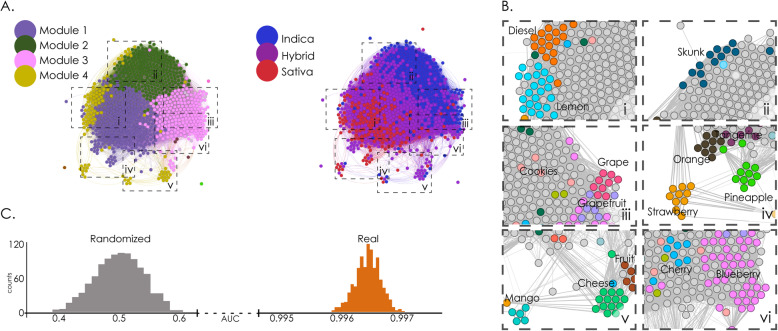Fig. 1.
Analysis of the effect similarity network allowed supervised and unsupervised cannabis species classification. A. Effect similarity networks, with nodes representing cultivars and spatial proximity reflecting the Spearman correlation of the corresponding effect frequency vectors. The left panel is color-coded based on the results of modularity optimization using the Louvain algorithm, while the right panel is color-coded based on species tags (“indica”, “sativa”, “hybrids”). B. Subpanels zooming into different regions of the networks to show that cultivars sharing naming conventions were grouped together. C. Histogram of AUC values obtained over 1000 iterations of random forest classifiers using the effect frequency vectors as features and species tags (“indica” and “sativa”) as labels. “Randomized” indicates counts of AUC values obtained after randomly shuffling the sample labels

